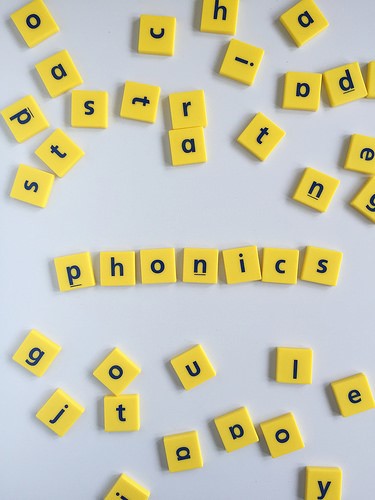 Phonetic Strategies
Phonetic Strategies
(the ability to manipulate sounds)
Learning new words can be challenging for your child. Try the following phonetic tips:
- Play word games.
- Use rhyming words as your child is figuring out a new word.
- Break a word down to individual sounds.
- Have your child create as many words as possible using a particular sound. For instance /ch/ -cheese, chat, etc.
- Sound out words.
- Clap out words or tap. This helps emphasize sounds, rhythms and syllables.
- Use synonyms.
- Read aloud. Read together. Run your finger under words as you read them.
- Be patient!
Other phonetic resources:
- http://www.k12reader.com/effective-strategies-for-teaching-phonemic-awareness/
- http://www.readingmanipulatives.com/resources/LiteracySkills/TipsDecoding.htm
- 2nd grade phonemic awareness: http://www.internet4classrooms.com/grade_level_help/language_phonemic_awareness_language_arts_second_2nd_grade.htm
Try these tips using:
 Relf, P. & Speirs, J. (1995). The magic school bus plants seeds: A book about how living things grow. Baton Rogue, Louisiana: Scholastic Books.
Relf, P. & Speirs, J. (1995). The magic school bus plants seeds: A book about how living things grow. Baton Rogue, Louisiana: Scholastic Books.
As you read with your child or student, encourage the following reading and studying practices:
- Briefly scan through the book looking at the organization within. Point out headings, graphs, illustrations and charts.
- Have your child create a list of questions and items they would like to learn.
- Use the K-W-L chart.
- Look for:
- Cause and effect
- Relationships
- Sequences
- Definitions
- Compare and contrast
- Problems and solutions
- Help your child choose other books to learn more about the topic. See Alyson Beecher’s article on how to choose a book for tips. (http://www.scholastic.com/bookfairs/experience/articles/2013/jan/powerful-practices-help-students-connect-with-nonfiction-texts.asp)
- Read the book with your child, pulling out any difficult verbage.
- Help your child create a list of unfamiliar words and discuss their meanings.
- Introduce the word in context. Help your child to figure out the meaning by what is around the unfamiliar word.
- Use synonyms.
- Try the PET system. P –pronounce the word. E –explain the word, both meaning and use. T –try it. Let your child try using the word in another context (Silverman, 2013).
- You don’t have to read every page in non-fiction. Let your child search for what they want to know.
- Take your child to the library to find more books on plant life.
- Search the internet for information on plant life for children.
By Tracy Atkinson
Tracy Atkinson, mother of six, lives in the Midwest with her husband. She is a teacher, having taught elementary school to higher education, holding degrees in elementary education and a master’s in higher education. Her passion is researching, studying and investigating the attributes related to self-directed learners. She has published several titles, including Calais: The Annals of the Hidden, Lemosa: The Annals of the Hidden, Book Two, Rachel’s 8 and Securing Your Tent. She is currently working on a non-fiction text exploring the attributes of self-directed learners: The Five Characteristics of Self-directed Learners.


Comments are closed